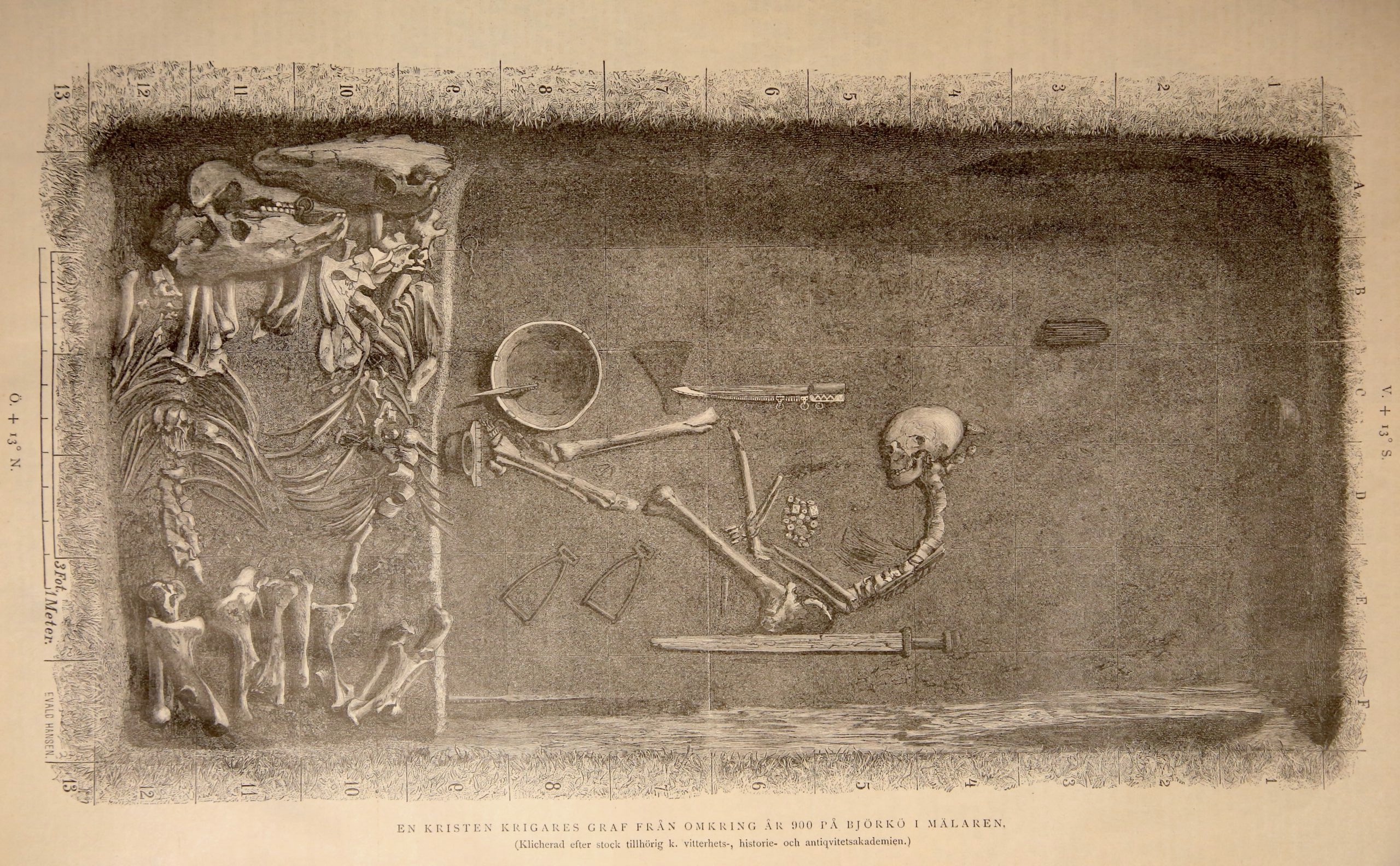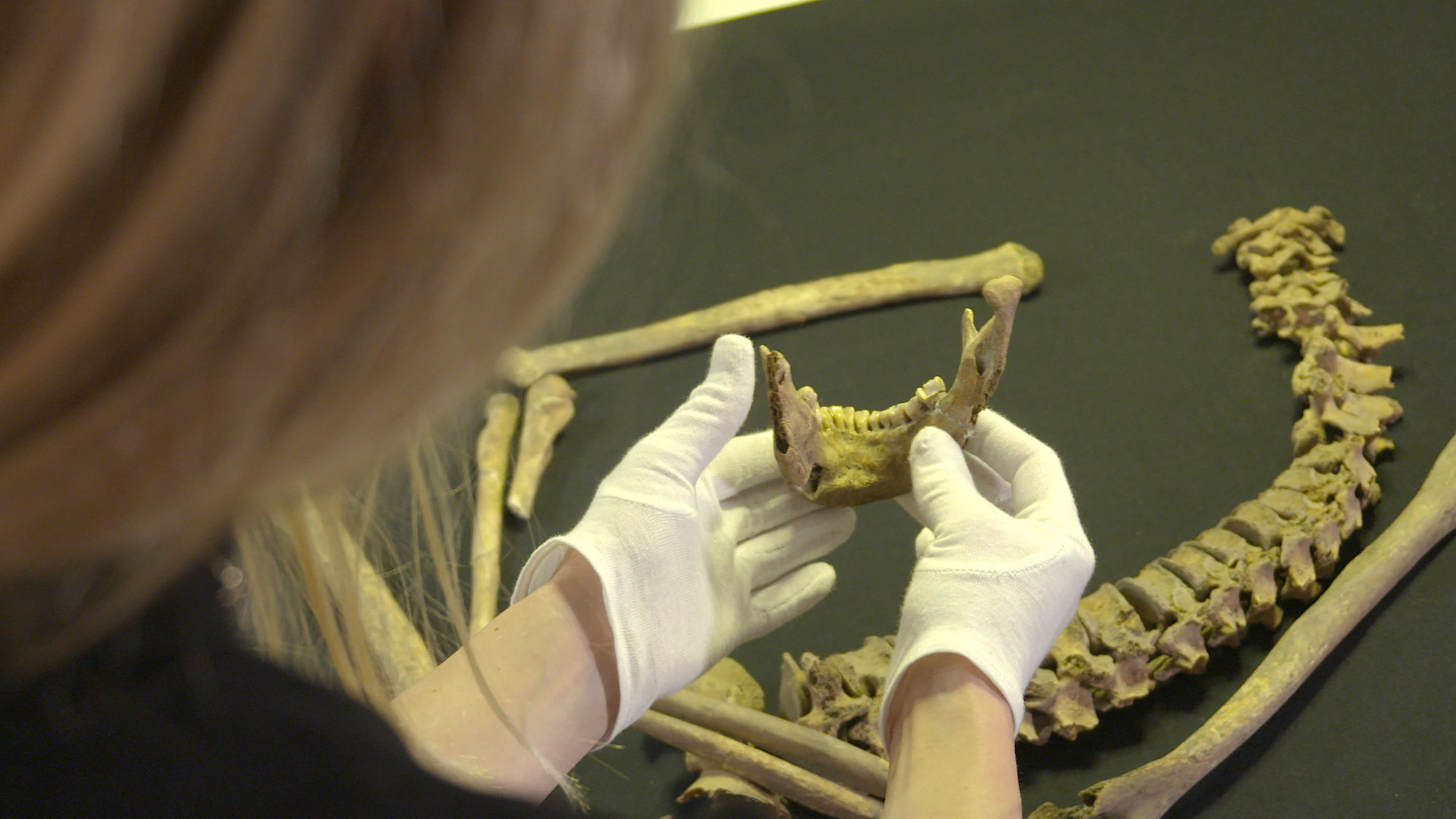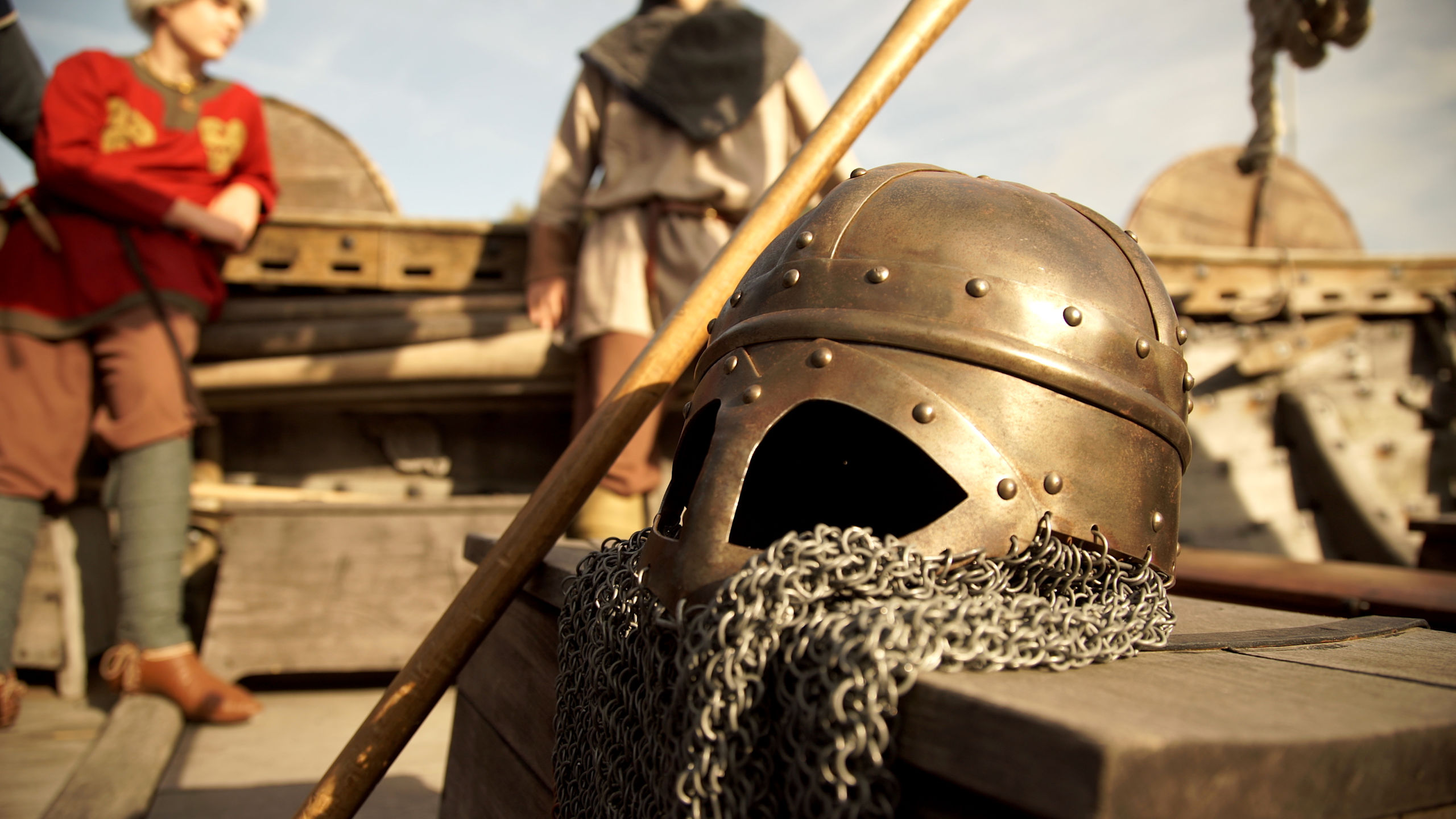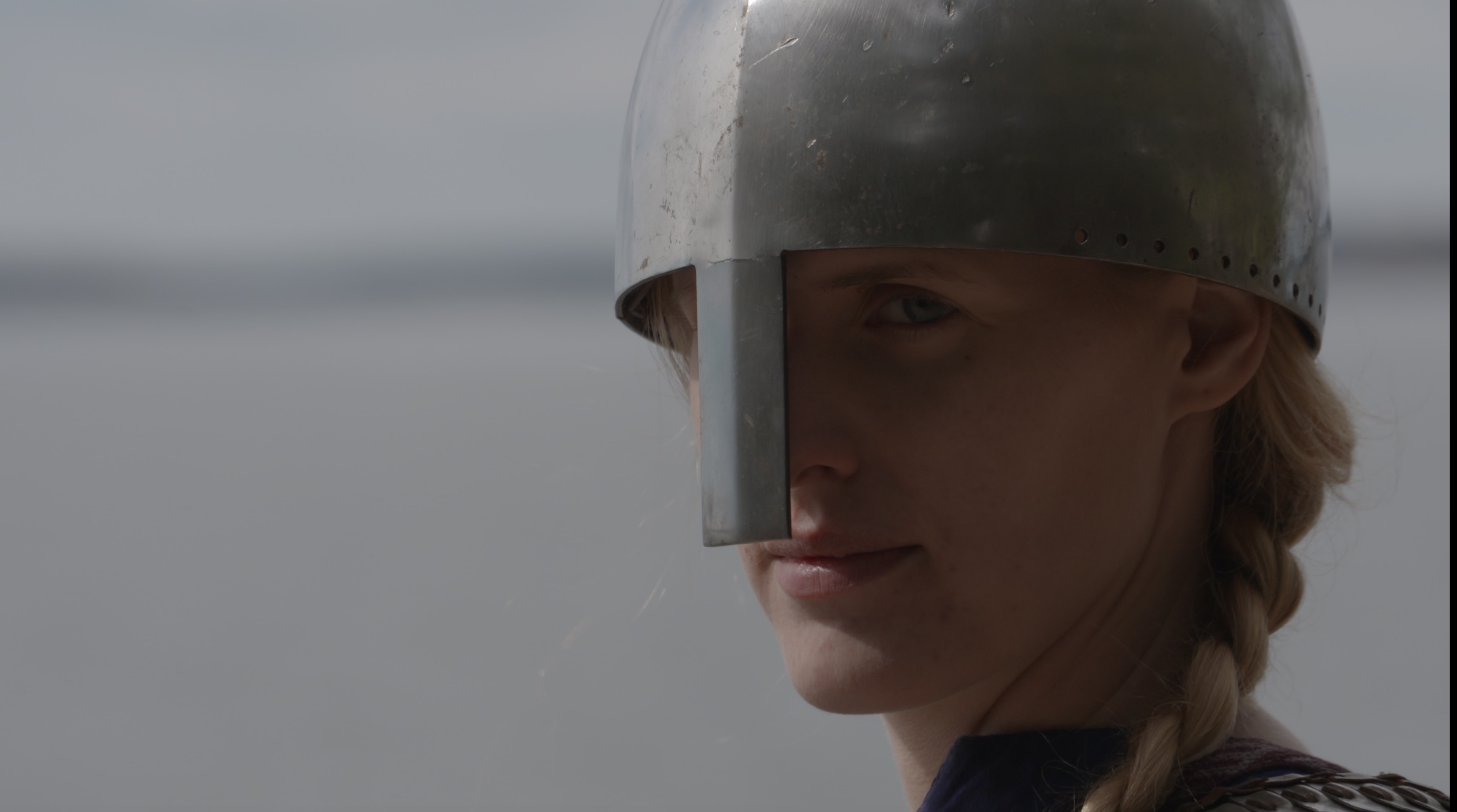Now in its 18th season, PBS’s ongoing limited series, Secrets of the Dead examines the skeletal remains from the most important archaeological site of the Viking Age—Björkö, Sweden.
The town, known as Birka from 750-950 AD, was home to one of the largest trading centers in the Viking world. It is now home to nearly 3,000 graves, half of which remain untouched.
PBS’s upcoming show Viking Warrior Queen, which premieres on July 7, at 8 p.m. EST, explores the skeletal remains of Bj 581, who was found by Swedish archaeologist Hjalmar Stolpe in 1878. Bj 581—named thusly for Björkö and the numbered grave unearthed by Stolpe—was found buried with two horses and a large block of granite. Alongside Bj 581, archaeologists also found a “stockpile of medieval weapons, including a shield, a knife, a bow and arrow, a spear, an axe and a sword, all of which indicated that the grave belonged to a great warrior,” according to the PBS press release.

Due to the weaponry found, for nearly a century the remains were believed to be that of a male warrior. It wasn’t until 1975 when osteo-archeologist Berit Vilkans noted that the forearms of Bj 581 were slim, suggesting that the skeleton was that of a biological woman. Forty bones of Bj 581 were discovered, yet none were gender-specific and therefore the identity of the Viking remained male.
In 2017, however, a fierce debate erupted between historians and archaeologists after Stockholm University mapped the DNA genome of Bj 581’s remains. The university conclusively found that the skeleton was biologically female, as it contained two X chromosomes, but no Y chromosomes.

While there is no longer a debate as to the sex of Bj 581, questions remain as to whether she was a warrior. The mythical existence of shield-maidens have long been held in question, with many historians arguing that their existence is based more in fiction than fact. Judith Jesch, a professor of Viking studies at the University of Nottingham, called the label of a Birka female Viking warrior “premature”.
Others questioned the distinction between sex and gender following the 2017 report; so much so that in 2019 the university republished its findings to defend against such criticisms.
“Can we be sure that the person in Bj.581 was a woman, in a gendered sense? No, we cannot. She may have taken on a man’s social role, while retaining a feminine identity,” writes one of the study’s coauthors, Neil Price.
“While we understand this line of thinking in the context of contemporary social debates, it should be remembered that this is a modern politicised, intellectual and Western term, and, as such, is problematic (some would say impossible) to apply to people of the more remote past,” Price continues. “All this is also inevitably speculative, considering the limitations of the archaeological material. There are many other possibilities across a wide gender spectrum, some perhaps unknown to us, but familiar to the people of the time. We do not discount any of them.”

By “using the latest scientific discoveries” to share “fresh perspectives on historical events,” the Emmy-nominated series Secrets of the Dead will seek to challenge “prevailing ideas” that discount the notion of a female Viking warrior. As it stand, Bj 581 may help to rewrite our understanding of Viking society.
“To those who do take issue,” writes Price, “we suggest that it is not supportable to react only now, when the individual has been shown to be female, without explaining why neither the warrior interpretations nor any supposed source-critical factors were a problem when the person in Bj.581 was believed to be male.”

